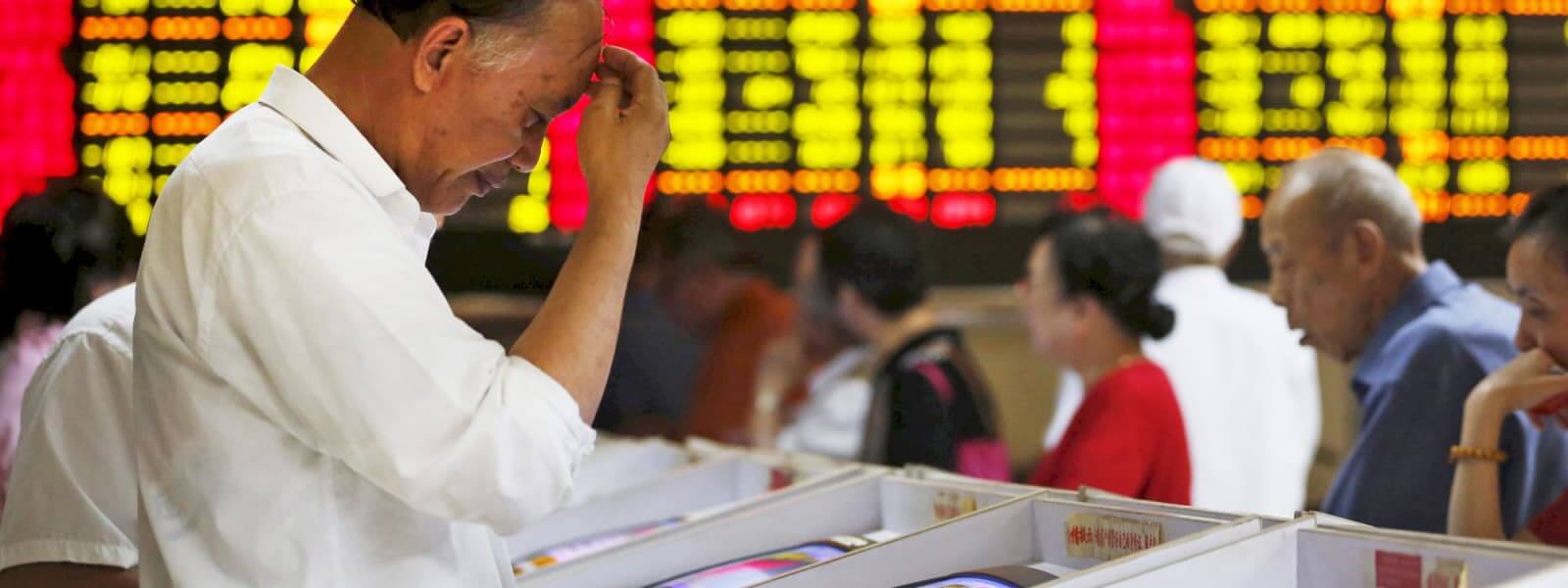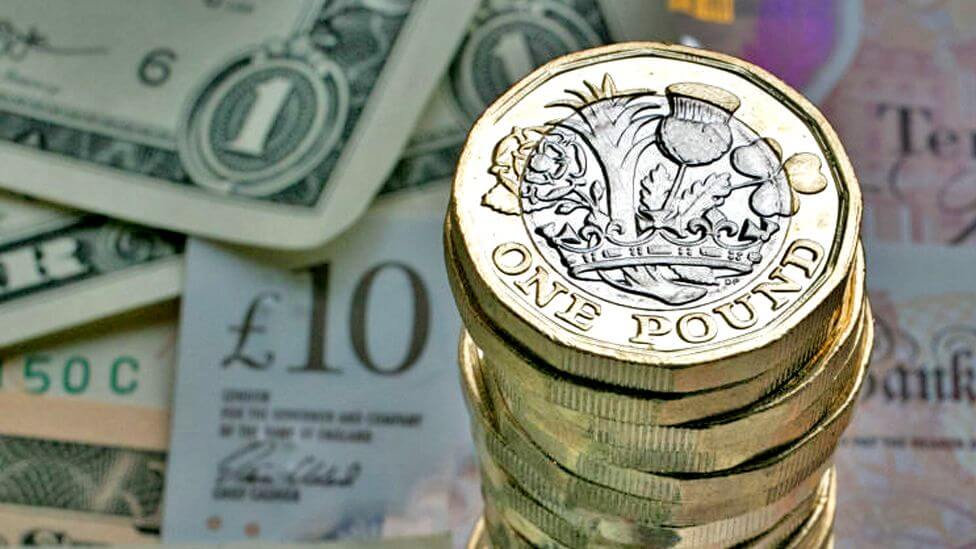
After yesterday’s falls in global equities which seemed to be prompted by concerns about protests in China, most Asian equity markets are up this morning. The moves have been led by a substantial rebound in Chinese market indices as China’s National Health Commission announced that there would be a press briefing this morning on Covid-related restrictions. However, initial indications are that there is no substantive change in Covid policy. Some US Federal Reserve policymakers cautioned yesterday that hopes of an early end to interest rate rises may be premature. Richmond Fed President Barkin said he favoured a rate path that was “probably longer and potentially higher”.
In the UK, October money supply and bank lending data will provide an indication of the impact of recent rises in interest rates. In particular, a decline in mortgage approvals and secured lending seems likely as the data covers the period immediately after the mini-Budget when mortgage rates were at a recent peak.
In the Eurozone, both the manufacturing and service sectors have seen sharp falls in business confidence this year and the European Commission measures both hit new 2022 lows in October. They are forecast to have stayed close to those lows in November but the recent easing in energy price inflation makes it slightly more likely that the energy-intensive manufacturing sector may see a modest rebound.
Also in the Eurozone, November CPI data for Spain and Germany may provide hints on tomorrow’s inflation outturn for the Eurozone as a whole. Last month, Spanish inflation slipped while price rises in Germany accelerated.
In the US, the Conference Board measure of consumer confidence is predicted to have fallen for the second month in a row. Meanwhile, house prices indices for September are expected to record a fall reflecting the recent slump in the housing market.
Bank of England Governor Bailey is scheduled to testify to a House of Lords Committee this afternoon. So far, BoE policymakers have stayed quiet on whether the recent budget will have had any real impact on the BoE’s plans for interest rates, so one thing markets will be looking for today is whether Bailey has anything to say on this.
Early Wednesday, the November reading of the Lloyds Business Barometer will show whether business confidence has fallen again. In October it slipped, albeit only marginally, for the fourth time out of the last five months.
Bond yields in both the UK and the US initially slipped yesterday as ‘risk off’ sentiment in markets was further fuelled by protests in China. However, yields then rebounded and ended the day little changed. In currency markets, the US dollar picked up against both the euro and sterling.

Equities across the Far East have tumbled overnight in response to growing unrest over Covid restrictions in China. Concerns that rising case numbers and ongoing protests could lead to further supply chain disruption and dampen consumption are weighing on sentiment with oil prices also moving lower overnight along with a number of base metals. Meanwhile, Australian retail sales fell 0.2% in October against market expectations for a 0.5% monthly rise.
Over the past week, hopes of an early easing in the pace of monetary policy tightening have continued to build. That has helped fuel a further slide in bond yields with US 10-year Treasury yields dropping close to their lowest levels since early October, while UK 10-year gilt yields have touched below 3.0% for the first time since early September. However, central banks continue to face the dilemma of balancing growth and inflation risks and so are conscious of the risks of tightening too much or too little.
As a result, the emphasis now seems to be on a more measured pace of tightening. Last week’s release of the minutes to the November Federal Reserve monetary policy meeting and comments from Fed officials again indicated that after four successive 75 basis points rate hikes, a smaller rise of 50bp is likely at the next Fed meeting in mid-December.
Comments from Bank of England and European Central Bank policymakers have generally been a little more guarded. In particular, ECB officials seem to be indicating that the December policy decision will be a close call. But on balance both seem to be signalling that their next moves are likely to see smaller rate rises than the 75bp moves approved last time. Later today, ECB President Lagarde is due to speak in front of the European Parliament’s Economic and Monetary Affairs committee and markets will be watching closely for clues over the outlook for monetary policy. However, with her appearance coming just ahead of the next Eurozone CPI report on Wednesday, her comments may be somewhat guarded.
Elsewhere, there is a lack of any tier 1 economic data releases today. Eurozone M3 money supply data is forecast to show a moderation in annual growth from 6.3% to 6.1% in October. In the UK, the CBI survey will provide one of the first indications of spending trends heading into the key Christmas period, ahead of the more closely watched ONS report on 16 December, albeit the survey will not capture the full effect of Black Friday sales.
In the US, today’s focus will be on comments from Fed members Williams and Bullard. However, markets are likely to pay more attention to Fed Chair Powell’s comments on Wednesday.
Events in China have led to a deterioration in market risk sentiment, pushing the US dollar and US Treasury bonds higher. GBP/USD has moved lower as a result but continues to hold above the 1.20 mark, while EUR/USD is currently trading just below 1.04. The Brent crude oil prices has also seen a further decline to around the recent low in late-September.

Asian markets are mixed to lower amid subdued trading as investors assess prospects for further, but potentially slower, interest rate hikes among major central banks, as well as rising Covid case numbers in parts of China. Japan reported higher than expected inflation figures for Tokyo (which are released before the national data), led by energy and the weak yen. The Bank of Japan, however, broadly considers the country’s inflationary impulse as temporary. US markets are set to close early later today following yesterday’s Thanksgiving holiday, with Black Friday marking the start of the festive shopping season.
Today’s calendar is sparse in terms of scheduled economic data or events. German third-quarter GDP figures, released earlier, were revised up to show growth of 0.4%q/q after previously already surprisingly on the upside with 0.3%q/q. Latest survey evidence, however, suggests the economy is slowing and may contract in the current quarter. However, yesterday’s improvement in the closely watched IFO survey provided some hope of a relatively early end to the downturn in activity. German GfK consumer confidence, also published earlier this morning, edged up for a second month but remained negative at -40.2.
Attention will likely turn to next week. The main global focus will be on the US labour market report, Eurozone flash CPI inflation and China official PMIs. Fed Chair Powell is scheduled to speak on the economic outlook and ECB President Lagarde will appear before a European Parliament committee.
In the UK, the Bank of England will publish its latest money data, including consumer credit, secured lending and the number of mortgage approvals. Several business surveys will be published, including the CBI’s distributive trades survey, the Bank of England’s ‘Decision Making Panel’ and our own Lloyds Bank Business Barometer.
The pound rose to a three-month high above 1.21 against the US dollar, although it has edged a little lower overnight. The most recent rally was supported by comments from BoE rate-setters confirming that interest rates will likely have to rise further to curb inflation despite the economic downturn. The euro also rallied to above 1.04, reflecting prospects of higher ECB interest rates and broader dollar weakness. Oil prices, meanwhile, steadied but may end lower for a third consecutive week.

Asian equity markets are generally up this morning following gains in European and US markets yesterday. Minutes from the November US Federal monetary policy confirmed that policymakers now favour slowing the pace of US interest rate increases. China signalled the likelihood of more monetary policy stimulus including a probable cut in banks’ reserve requirement ratios. US markets will be closed for the Thanksgiving holiday today.
Yesterday’s November UK PMI data showed both manufacturing and services headline indices still stuck below the key 50 level that signals a contraction in activity. Manufacturing output declined at a faster pace than services and with overall volumes of work down for the fourth month in a row and export orders particularly weak there appears little prospect of a near-term rebound. Today’s November update for the CBI industrial survey will provide another timely update on the factory sector and the message is expected to be the same. Orders are predicted to have slipped for a fourth successive month signalling continued downside risks for the sector.
The German IFO survey for November is expected to have posted another weak reading for the current situation index with its level likely to remain close to October’s nineteen month low. However, on a more optimistic note it will be interesting to see if the expectations component improves for a second successive month, on the back of the recent fall in wholesale gas prices which offers hope of an easing in energy prices.
Sweden’s Riksbank is likely to raise interest rates for the fourth successive time this morning, following up on September’s 100 basis point hike with a 75bp rise. The central bank is also expected to raise its forecast for the level at which rates will peak but more positively it may signal that the end of the tightening cycle may not be far off.
The minutes of the European Central Bank’s October policy meeting will be watched for any clues on what is planned for the next update in December. The market expectation is that after two successive interest rate increases of 75bp it will next opt for a smaller rise of 50bp. However, ECB policymakers face a major dilemma because while the weakening activity picture certainly points in that direction still elevated inflation numbers certainly do not. In the UK, three Bank of England policymakers are scheduled to speak, and their comments may provide new clues on how much further UK interest rates are likely to rise.
US bond yields continued to slide yesterday helped by mixed economic data and the confirmation in the Fed minutes that the pace at which interest rates are hiked is now likely to slow. UK gilt yields also fell with 10-year yield touching below 3% for the first time since early September. In currency market the US dollar depreciated further against both the euro and sterling.

Equity market indices are mostly higher this morning, following stronger performances in the US and Europe yesterday. Investors continued to assess the Covid situation in China and the outlook for global monetary policy, including the possibility of smaller hikes going forward. That said, the Reserve Bank of New Zealand overnight raised interest rates by 75bp to 4.25%, which was in line with expectations. It now expects interest rates to peak higher at 5.5% after revising its inflation outlook and despite a brief recession forecast for next year.
Today’s main data focus is the November flash PMI reports, particularly those for the UK and the Eurozone. We expect the UK manufacturing and services PMIs to fall to 45.6 (from 46.2) and 48.0 (from 48.8), respectively. It would be a fourth month of contraction for the overall index for manufacturing and a second consecutive month of contraction in services output. The deceleration in overall activity is consistent with Q4 GDP contraction which would be a second successive quarterly decline, signifying a technical recession.
Also in the UK, the Supreme Court is due to rule on whether the Scottish Parliament can hold a second independence referendum without the consent of Westminster. Meanwhile, following last week’s Autumn Statement, Chancellor Jeremy Hunt is due to appear before the Treasury Select Committee at 3pm. Bank of England Chief Economist Huw Pill is also scheduled to speak.
In the Eurozone, the PMI survey outcome is also forecast to remain in contraction territory, weighed down by weak demand and a challenging economic outlook. It is expected to be consistent with a fall in quarterly GDP (in Q4) for the first time since early 2021. We have pencilled in a tenth straight decline in the headline manufacturing index to 46.0 but little change in the stabilisation reading at 48.8.
The US calendar is busy today ahead of tomorrow’s Thanksgiving holiday. US PMIs will be released, but they tend to receive less attention than the ISM surveys due early next month. There has been a notable recent difference between the services PMI and the more upbeat ISM equivalent. Today’s composite PMI is expected to remain below the key 50 level. Durable goods orders, new home sales and the final University of Michigan consumer sentiment survey will also be released.
The main US focus, however, will probably be the published minutes of the Fed’s last monetary policy update on 2 November. The Fed raised interest rates again by 75bp, but the question going forward is whether the hiking pace slows and where interest rates might peak in 2023. After 75bp increases at each of the last four meetings, which brought the Fed funds rate to a 3.75-4.00% range, financial markets expect a smaller increase at the next meeting on 14 December.
Global bond market performance was mixed yesterday as US Treasury yields rose but UK gilt yields slipped back close to their lowest levels since last Thursday’s fiscal statement. In currency markets, sterling was up against the euro but fell modestly against a generally stronger US dollar.

Asian equity market performance is mixed this morning. Chinese indices led the underperformers as concerns about the rising numbers of Covid cases remained a factor. Comments from some US Federal Reserve and European Central Bank policymakers yesterday both indicated support for a slowing of the pace of interest rate increases at their respective December policy updates.
Just released data for October UK public finances showed net borrowing of £12.7bn. That was much lower than forecast but still some way above the borrowing rate for the same month a year ago. Today’s data may lead to some downward revision to borrowing forecasts for the year as a whole but the deteriorating underlying trend still provides support for last week’s fiscal tightening measures.
Senior officials from the Office for Budget Responsibility will testify to a House of Commons Committee this afternoon about last week’s fiscal update. Their comments are unlikely to reveal much that is new. However, it will be interesting to see if they are questioned about why they expect a quicker rebound in economic activity than the Bank of England. They may also be asked about how high the risks are that the new fiscal targets will not be met.
Today’s data calendar is light. Possibly of most interest will be the November consumer confidence update for the Eurozone. It rebounded modestly last month from a multi-year low, but it is unclear whether this month will have seen a further rise. Several central bank policymakers are also scheduled to speak in both the Eurozone and the US.
The OECD will release a new set of economic forecasts today. Those seem likely to show downgrades to economic growth forecasts everywhere, including the UK. Despite that forecasts for inflation will still show price pressures remaining intense near term but falling through next year.
The New Zealand central bank will issue its latest monetary policy update early on Wednesday. A ninth successive interest rate rise is expected and the majority of forecasters are expecting the RBNZ to up the ante with a 75 basis point hike. However, it faces a difficult decision with a tight labour market and recent inflation outturns above expectation pointing to the need to hike aggressively while a faltering housing market argues for caution. The RBNZ is also expected to make changes to its forward guidance by highlighting the likelihood that rates may peak above previously expected levels.
Global bond market performance was mixed yesterday as US Treasury yields rose but UK gilt yields slipped back close to their lowest levels since last Thursday’s fiscal statement. In currency markets, sterling was up against the euro but fell modestly against a generally stronger US dollar.

Equities are mostly trading lower across the Far East amid concerns that China may tighten restrictions following reports of a number of Covid-related deaths across the country. The extent to which global economic activity will slow in response to tighter monetary policy also remains a concern for markets. On Friday, Boston Fed’s Collins reiterated her view that all options for the size of the next interest rate increase in December remain open, including the possibility of another 75bp rise. Over the weekend, however, Atlanta Fed President Bostic said that he favoured slowing the pace of interest rate increases.
It is a holiday-shortened week in the US, with the Thanksgiving holiday on Thursday and an early close for US markets on (Black) Friday which also marks the start of the Christmas shopping season. However, a number of US data releases are crammed into the first part of the week, including the flash PMIs, durable goods orders and new home sales reports and the final reading of the University of Michigan consumer sentiment survey, as markets continue to gauge how much further US policy rates will rise.
After 75bp increases at each of the last four meetings, which brought the Fed funds rate to a 3.75-4.00% range, financial markets expect a smaller increase at the next meeting on 14th December. Recent signs of softer inflation are likely to be welcomed by rate-setters but are not sufficient to prevent further policy tightening. Later today, US Fed rate-setter Mary Daly is due to speak on ‘price stability’ at an event hosted by the Orange County Business Council. In recent comments, Ms Daly ruled out the Fed pausing hiking and suggested that US policy rates could end up in a 4.75 – 5.25% range.
Questions over how far the ECB will raise interest rates also continue to rage, with markets pondering whether it will raise rates again by 75bp at its next policy meeting in December or decides on a smaller half-point increase. One reason for a smaller hike is that the economic downturn appears to be gaining momentum. At the same time, the latest inflation at 10.6% for October is uncomfortably high for policymakers, so another 75bp hike remains a possibility along with plans to reduce the balance sheet. A number of ECB officials are scheduled to speak today, notably Vasle, Holzmann, Simkus and Centeno, and markets will be watching for clues about the next policy move.
There is a lack of key economic data releases today, including in the UK, where the focus is limited to a speech by Bank of England policymaker Cunliffe at the University of Warwick. However, with the focus of the event on DEFi digital currencies, his comments may provide little to no insight into his views on the UK monetary policy outlook.
The risk-off tone has provided support to the US dollar at the start of the week with the Bloomberg dollar index trading 0.5% higher. GBP/USD is modestly lower as a result but continues to trade above 1.18. US bond yields meanwhile are marginally weaker with 10-yr yields below 3.80%.

Asian equity market performance is mixed this morning as markets remain unsure about how further global, and in particular, US monetary policy will be tightened. Comments made by US Federal Reserve policymakers yesterday were hawkish. St Louis Fed President Bullard warned that US interest rates may need to rise above 5%, while Minneapolis Fed President Kashkari in reference to the favourable reaction by markets to lower than expected US inflation said that they “cannot be overly persuaded by one month’s data”.
Just released data for UK retail sales October posted a rise of 0.6%, following large declines in the previous two months. It was the first monthly gain since July and only the second this year. Nevertheless, retail sales were still 6.1% lower than a year ago. Moreover, the fundamental drivers of consumer expenditure remain precarious with spending power being squeezed both by high inflation and rising interest rates. The November reading for the GfK consumer confidence measure, released a little earlier this morning, posted a second consecutive small gain. Nevertheless, it is still close to September’s all-time low.
In the US October existing home sales are likely to provide further evidence of the negative impact of higher interest rates on one of the most rate sensitive sectors. Data released yesterday showed housing construction starts post a fall of 4.2% in October and todays outturn for sales is expected to see a decline of 6%, which would be the 9th consecutive slip. The news earlier this week that retail sales rose sharply in October was an indication that some parts of the economy are still growing, and the consensus expectation is that US GDP will rise in Q4 However, weakness in more interest rate sensitive sectors may be seen by markets as an indication that rates are biting and so may not have much further to rise.
Jonathan Haskel, one of the external members of the Bank of England’s Monetary Policy Committee speaks at a conference this afternoon. As he is scheduled to talk about fiscal policy there will be most interest in whether he has anything to say about yesterday’s UK budget update and whether it had any impact on his thinking about how much further UK interest rates are likely to go up. However, it seems more likely that he will avoid comments on the immediate policy outlook. European Central Bank President Lagarde and US Federal Reserve policymaker Collins are also scheduled to talk at conferences.
UK government bond yields rose yesterday. However, most of the upward move occurred before the UK budget update and so may have been more of a response to international uncertainties. Sterling was down modestly on the day against both the US dollar and euro on Thursday. However, it has rebounded overnight as it holds on to most of this week’s gains particularly versus a generally weaker dollar.

Asian equity markets are mostly lower overnight following the negative close in the US and Europe, while US Treasury yields edged higher. Fed policymakers reaffirmed the likelihood of further increases in US interest rates, especially after yesterday’s stronger-than-expected retail sales report.
Today’s UK Autumn Statement is expected to take place around lunchtime. The fiscal update will come in conjunction with the latest set of economic forecasts from the OBR (Office for Budget Responsibility). As these are being released only a couple of weeks after the BoE’s latest forecasts, there will inevitably be comparisons. The BoE expects GDP to have fallen in late 2022 and continue to do so throughout 2023. It will be interesting to see if the OBR is more optimistic even after it accounts for new tax and spend measures that will be announced today.
A key part of the OBR’s forecast will be by how much it gauges that public finances have deteriorated since its last update in the Spring. A combination of factors, including lower economic growth and higher interest rates, points to a deterioration even after the reversal of most of the measures announced in September’s mini-Budget. The Chancellor’s focus is expected to ensure that his key fiscal rule for debt to fall as a share of GDP in five years’ time is still met and, more broadly, to restore policy credibility. Reports point to tightening in the order of £50-60bn, with just over half accounted for by spending cuts and the rest by tax rises.
On the spending side, reports suggest that state pensions and benefits could be uprated in line with inflation. Savings will need to come from future cuts to departmental budgets. On the revenue side, it is rumoured that the windfall tax on energy companies may be extended as will be the freezing of inheritance and income tax allowances. An additional consideration will be what the Chancellor intends to do about the Energy Price Guarantee which expires at the end of March. Overall, a significant fiscal tightening may help reinforce the BoE’s message that interest rates may rise by less than markets currently expect.
UK GfK consumer confidence and official retail sales will be released early Friday morning. it was a surprise that consumer confidence rose in October to -47. Nevertheless, it remains very close to its all-time low of -49 and we expect it will have dropped back to the low in November. We also forecast a small bounce in October retail sales after a big fall in September, but the underlying position still looks precarious.
Several central bank speakers will draw attention later today. They include the BoE MPC’s Pill (Chief Economist) and Tenreyro, as well as the Fed’s Bullard and the ECB’s Villeroy. Eurozone October CPI inflation figures are expected to confirm preliminary ‘flash’ estimates of a rise to 10.7% in the headline measure. US data include housing data and the Philadelphia Fed manufacturing survey.
The pound is marginally higher overnight against both the US dollar and the euro ahead of the Autumn Statement later today. The 10-year gilt yield closed at 3.15%, the lowest for two months since before the September mini-budget.

Most Asian equity markets are trading lower this morning despite gains in US and European markets yesterday. Markets may have been negatively impacted by geopolitical tensions following reports that missiles from the Russian-Ukrainian conflict had hit Poland. US President Biden said that the missiles were “unlikely” to have been launched from Russia. Meanwhile, former President Trump has confirmed he will run to be Republican candidate for the 2024 US Presidential election.
Just released data showed a higher-than-expected rise in UK annual CPI inflation in October to 11.1% (from 10.1% in September), while ‘core’ inflation was unchanged at 6.5%. A sizeable rise in inflation had generally been expected primarily because the government’s measures to cap utility prices had not fully offset the recent rise in gas market rates. Higher-than-expected producer price gains also pointed to pipeline inflationary pressures remaining elevated. The UK numbers contrast with recent outturns in the US which have shown evidence that inflation is slowing.
Bank of England Governor Bailey and several colleagues from the Monetary Policy Committee will testify to a House of Commons Committee this afternoon about their recent decision to raise interest rates. Markets will be watching for whether they add to their guidance that rates are likely to rise further albeit by less than markets expect. However, the greatest attention is likely to be on tomorrow’s budget update, its impact on the economy, and whether fiscal tightening may reduce the need for further interest rate increases.
US updates for retail sales and industrial production are forecast to have both risen in October. Some of the most interest rate sensitive sectors, notably housing is seeing a clear negative impact from higher interest rates. However, the economy as whole still seems to be growing and the consensus is that GDP will rise again in Q4.
That appears at odds with the view that there will be an early pivot in monetary policy. Nevertheless, lower than expected October producer price data yesterday provided further support to market expectations that US interest rates may be close to a peak. Those expectations had already been boosted by a downward surprise on CPI inflation last week. Several Fed policymakers have warned against reading too much into the data and said that interest rates have further to rise albeit the pace of increases may now slow. Today’s Fed speakers are likely to provide further support to those comments.
Despite US government bond yields falling sharply yesterday after the downward surprise on the PPI, the move has largely reversed. In currency markets, the prospect of a slower pace of monetary tightening added to the downward pressure on the US dollar with GBPUSD briefly moving above 1.20. Meanwhile, against EUR, sterling is broadly flat.
CFDs are complex instruments and come with a high risk of losing money rapidly due to leverage. You should consider whether you understand how CFDs work and whether you can afford to take the high risk of losing your money. Trading derivatives is risky. It isn't suitable for everyone; you could lose substantially more than your initial investment. You don't own or have rights to the underlying assets. Past performance is no indication of future performance and tax laws are subject to change. The information on this website is general in nature and doesn't consider your personal objectives, financial circumstances, or needs. Please read our legal documents and ensure that you fully understand the risks before you make any trading decisions.
The information on this site is not intended for residents of Canada, the United States, any other restricted jurisdictions (e.g. blacklisted FATF countries) or use by any person in any country or jurisdiction where such distribution or use would be contrary to local law or regulation.
Moneta Markets is a trading name of Moneta Markets Ltd, authorised and regulated by the Financial Services Authority of Seychelles with License No. SD144. Moneta Markets Ltd is registered and located at Room B11, 1st Floor, Providence Complex, Providence, Mahe, Seychelles which operates under www.monetamarkets.sc.
You should consider whether you’re part of our target market by reviewing our , and read our other legal documents to ensure you fully understand the risks before you make any trading decisions. We encourage you to seek independent advice if necessary.